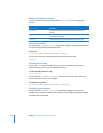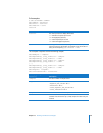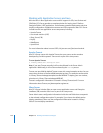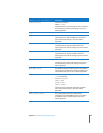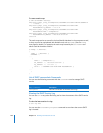
14
217
14 Working with Network Services
In this chapter you will find commands you can use to
configure and manage DHCP, DNS, Firewall, NAT, and VPN
services in Mac OS X Server.
Mac OS X Server network services add administrative and managerial capabilities to
basic networking protocols. This chapter describes the commands used to configure
and manage network services.
Managing Network Services
Mac OS X Server uses the xinetd process to manage many of its UNIX network services,
such as FTP, finger, and so on. xinetd listens for requests on certain TCP/IP sockets.
xinetd is a secure replacement for inetd. However, because xinetd does not handle
RPC services very well, both inetd and xinetd are included with Mac OS X. xinetd does
the same things as inetd, with the added security benefits of access control based on
source address, destination address, and time, extensive logging, efficient containment
of denial-of-service attacks, and the ability to bind services to specific interfaces.
The configuration files for xinetd provide a mapping of services to the executable that
should be run to service a request for a given service. For example, if you enable FTP
file sharing, the ftpd process is not started immediately. Instead, the configuration file
is updated to reflect that xinetd should listen for ftp requests, and when it receives
one, it should launch ftpd to service the request. When the first ftp request comes in
to the computer, xinetd receives the request, and then launches ftpd to handle it.
In this way, xinetd can keep the number of services running on a particular computer
lower by launching only those that are requested by a client.




